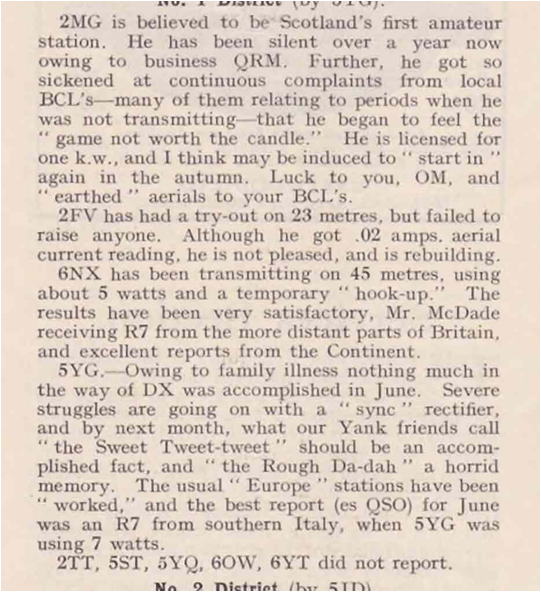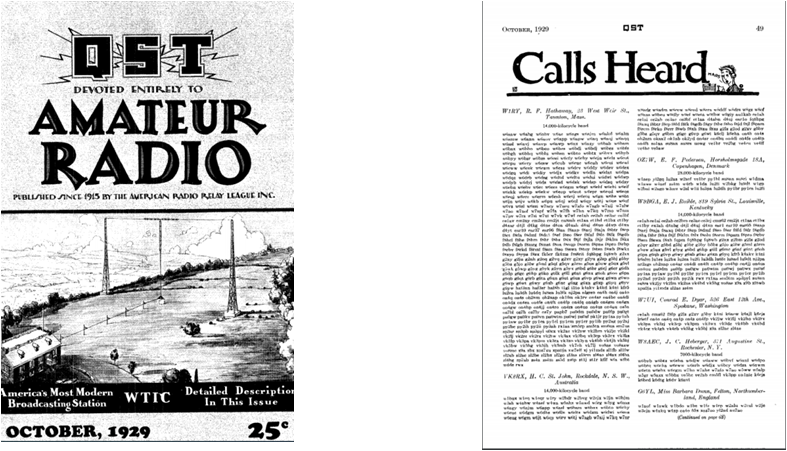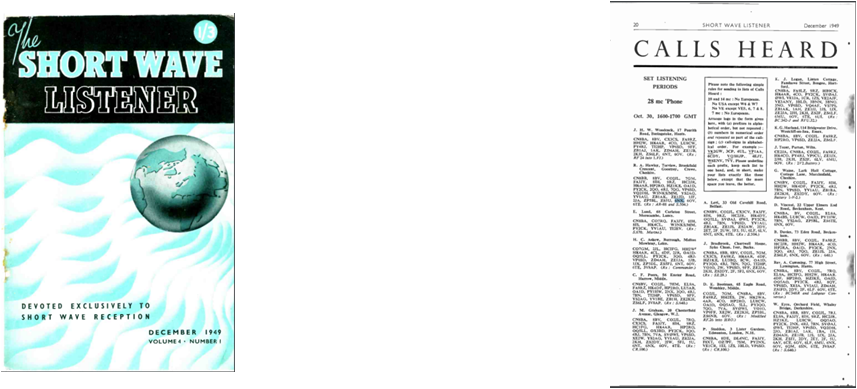Club History
In the 1926 article, which has a report in Scotland District 1 (RSGB regions back to numbers, they can’t make their mind up) it mentions, the callsign (6NX), the person of the station and the DX they have worked. This relates to UK stations and Italy (prefix of R7 at the time). I also found in same article, one of the club members callsign had worked the club callsign back in 1926, 2TT (Sorry Stevie no name in the article, for you to research
The QSL Cards above shows the callsign active in 1927 it also show the person holding the callsign has changed with the address also to another part of the country. J T. McDade 8 Monteith Row Glasgow. The second card shows a very early version of a regional locator in the callsigns in this case the ‘C’ in the qsl card.



As part of tracing the callsign I wanted to see proof of the callsign in operation for as many years as possible this is not an easy challenge in the time period as the amount of resources reduce in number as the Hobby gets going. However thanks to a regular part of the QST Mag with a “Heard” section this enabled me to track the callsign in 1936 , 31, 30 and 1929. This was all well and good but it only gave the callsign and nothing else so only proved it had been on air nothing more, so the search went on.
In October 1935 Harrower changes callsign from 2AVC to G6NX which would later become the club callsign. This shows how the callsign moved from Glasgow to Stirling which you will see below.

As the war began the Radio Security Service was formed, as part of that 6NX (confirmed by GM4BDJ Bruce) as well as other members in the area were drafted in as part of a UK listening network to record all German radio traffic. This enabled the people at Bletchley Park to decode the messages and reduce how long the war would have gone on and ultimately win the war. However as part of the listening service there were regional offices and in Scotland the office is closer to home, as the main office for Scotland was in the centre of Stirling. (Please see below on example log)
In the 1930’s we pick up the callsign once in a newspaper article in 1937 but more importantly with a lot more information we also pick up the callsign in the T&R Bulletin by the RSGB (now RADCOM) it shows an import link between the RSGB and the callsign. It shows that before the war Doug Harrower lived in Stirling but at a different address Forthbank Cottage. It also shows that he was an RSGB District Manager but unlike today the District where not numbered so he was in charge of District F within Scotland


The callsign is traced through the 1950’s with a couple of sources one being a 1951 Callbook, second being 1949 Short Wave Listener article in America and the third an America Callbook from 1946. I found a more detailed address and name this will become important to the story. Doug. Harrower, 22 Waverley Crescent, Stirling.

This is the first picture and a name of D.M Harrower at the Scottish VHF Convention in Perth 1965. He is the one on the left. This is only picture of the operator of this callsign the club could find.


Club started in 1979 and soon after acquired the call of GM6NX, below on the page will take you back in time
The Club was started in the year 1979 within Stirling. The club had many venues for a few years until its current QTH in 1985. See pictures below of the club from over the years:

See Club history below from when the club was first set up in 1979 all the way back to the callsign being used for the first time in the 1920’s
